Planning a trip to Paris, especially if it is your first visit to the City of Light, requires a lot of research and careful attention to detail. After all, it would be a huge disappointment to show up at the Louvre only to find that the museum is closed, or that you don’t have the timed-entry tickets you need. Likewise, no one wants to spend three hours waiting in line for the opportunity to ascend the Eiffel Tower. These trip mishaps, among others, can be avoided with a good Paris trip planner.
Sure you can hire a travel advisor to do it for you, but with a little guidance, we can point you in the right direction and give you the tools you need to plan an amazing trip to Paris! Luckily my past experience as a travel agent building itineraries for families and developing relationships with local suppliers put me in a good position to plan my own trip this spring. And regular readers know that I’m a bit obsessive when it comes to research and trip planning.
So I figured why not share my Paris trip planning process with you, along with an easy-to-follow timeline and handy downloadable Paris trip checklist [see below]. And when you are ready to start planning, also be sure to check out my complete, detailed 5 days in Paris itinerary.
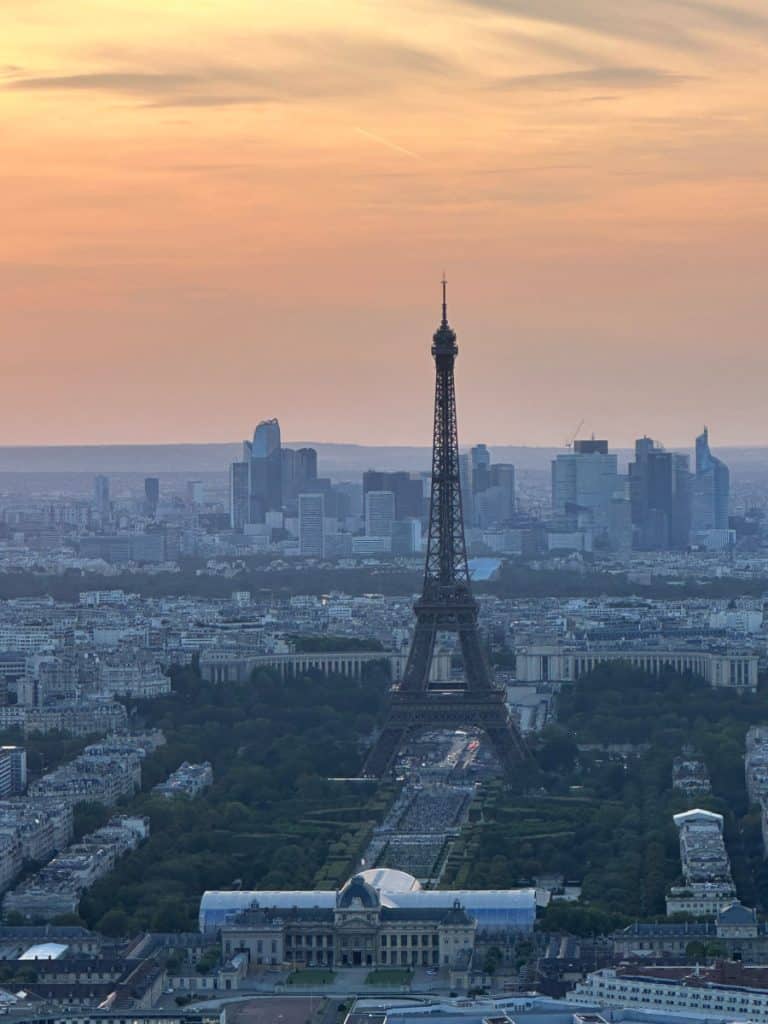
Your Guide to Planning a Trip to Paris
Note: This post may contain affiliate links. If you click a link and make a purchase, I may receive a small commission. All opinions are my own.
When Should you Start Planning?
How early should you start planning a trip to Paris? If you are visiting Paris during the high season, I would recommend that you start planning at least six months in advance to find the cheapest airfare and the best hotel rates. This is especially true if you are visiting with a family and require a family room or suite and want to stay in a centrally located hotel or apartment.
Luckily Paris is a big enough city that it isn’t impossible to plan a last-minute trip, you just need to be a bit more flexible on your budget and expectations. Ideally, you will start planning a trip to Paris at least three months in advance before prime tickets to the Eiffel Tower or the Louvre have been sold out.
How Long Should you Spend in Paris?
If this is your first time in Paris, I would recommend a minimum of five days, including your arrival day. Ideally, you would spend a week and have more downtime, plus time for a day trip from Paris, but you may also want to include a visit to a neighboring city like London or Amsterdam to round out your stay, or some time in the South of France.
For our spring break trip, we spent six nights in Paris and continued on to Venice (this was part of a celebratory graduation trip for us.) Even with six nights, our days were pretty busy and we aren’t planning any day trips. Spending a week in Paris is entirely doable.
Step 1: Establish your Paris Vacation Budget
Before you even get too far into planning your Paris trip, you need to figure out your Paris vacation budget so that you don’t get sticker shock when you start looking at the cost of hotels or apartment rentals.
Keep in mind that hotel rooms in Paris aren’t large and families will need a large suite or two rooms. Many times, they are better off with an apartment rental. Unfortunately, there are not a lot of great Airbnb options in Paris due to crackdowns on that service, at least not in the city center.
I put together an entire guide to Paris apartment rentals with many different options, but you can start by looking at options on VRBO.
We have broken down what an average family trip to Paris costs in a separate post that provides an excellent guide for airfare, accommodations, activities, meals, and transportation. Use this as a guideline when determining your budget, based on your own travel style and party size.
Step 2: Research and Book Airfare
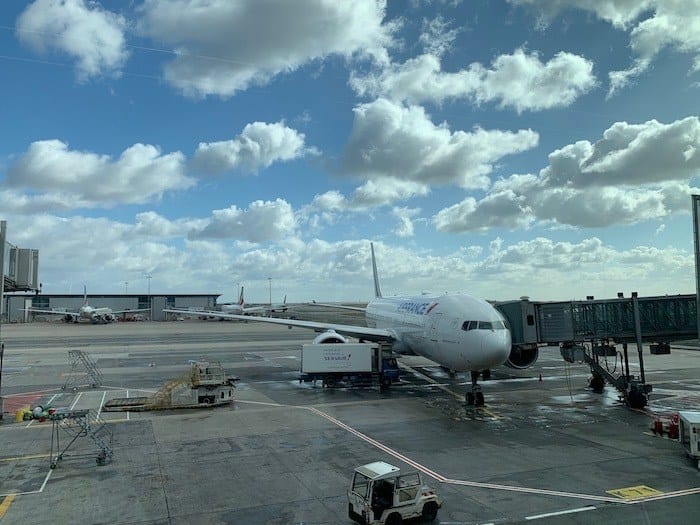
For international flights, I try to book my flight tickets about six months before my trip, especially if I’m trying to use airline points or miles as those seats disappear quickly. Once you have your vacation dates in mind, I would recommend setting an alert using an app like Hopper or signing up for membership for a flight fare sale alert service like Going.
If you are willing to try a budget airline, the new Play Airlines is offering cheap flights to Paris from the United States through Reykjavik. Or, if you have champagne tastes, La Compagnie is a business class-only airline offering flights from Newark to Paris. French Bee is another budget option. Personally, I find either Delta or Air France the most reliable.
Step 3: Figure out Where to Stay in Paris
Paris is divided into 20 arrondissements or neighborhoods. The inner circle, or those closest to the center of the city’s main attractions, are the lower numbers. There is a lot of discussion of the best places to stay in Paris and the best fit for you may depend on your travel style and comfort walking and taking the Metro.
However, it is frequently recommended that first-time visitors stay in the 6th Arrondissement, or the Saint Germain des Pres neighborhood. This posh central Paris neighborhood on the Left Bank near the Latin Quarter is very popular, and can also get pretty pricey. If you are looking for a bargain, you can stay further out or try the 3rd or 4th Arrondissement on the Right Bank, the Le Marais neighborhood.
If you are looking for an apartment, you will find the most inventory in the 7th Arrondissement, near the Eiffel Tower. And if you are looking for luxury hotels and designer shopping, the classic 8th Arrondissement, home to the Champs-Élysées, is where to look, although this might feel too touristy for those looking for a more “authentic” neighborhood.
Whichever neighborhood you pick, it helps to book early, approximately three to six months in advance. Be sure to check out my guide for renting an apartment in Paris, but for now, here are a few recommended hotels:
- Hotel Espirit Saint Germain
- Relais Christine
- Citadines Apart’hotel Saint Germain des Pres
- Hotel Relais Saint-Germain
Step 4: Develop your Paris Itinerary
Now comes the heavy lifting! It helps if you start researching your trip a few months before by browsing Pinterest, checking out blogs, and watching YouTube videos. You can even pick up a guidebook for a good overview of what there is to do.
Talk to your travel companions and start whittling down a list of your must-dos! Keep in mind that there are so many things to do in Paris that you simply can’t fit it all into one trip. And the easiest path to a miserable trip is overscheduling.
You also don’t want your trip to be only museums in Paris. Give yourselves time to sit in a cafe and drink a bottle of wine, walk through the Tuileries garden, stroll along the Seine, enjoy a local market, and maybe participate in an activity like a macaron-making class, perfume making, or a painting workshop. You may even want to take a food tour to experience some of Paris’ amazing cuisine.
Consider whether or not you would like to add a day trip to your itinerary. If you have more than five days in Paris, you can easily add in a day trip to the Loire Valley, Disneyland Paris, Versailles, Normandy, or wine tasting in the Champagne region. See the Paris family tours worth booking.
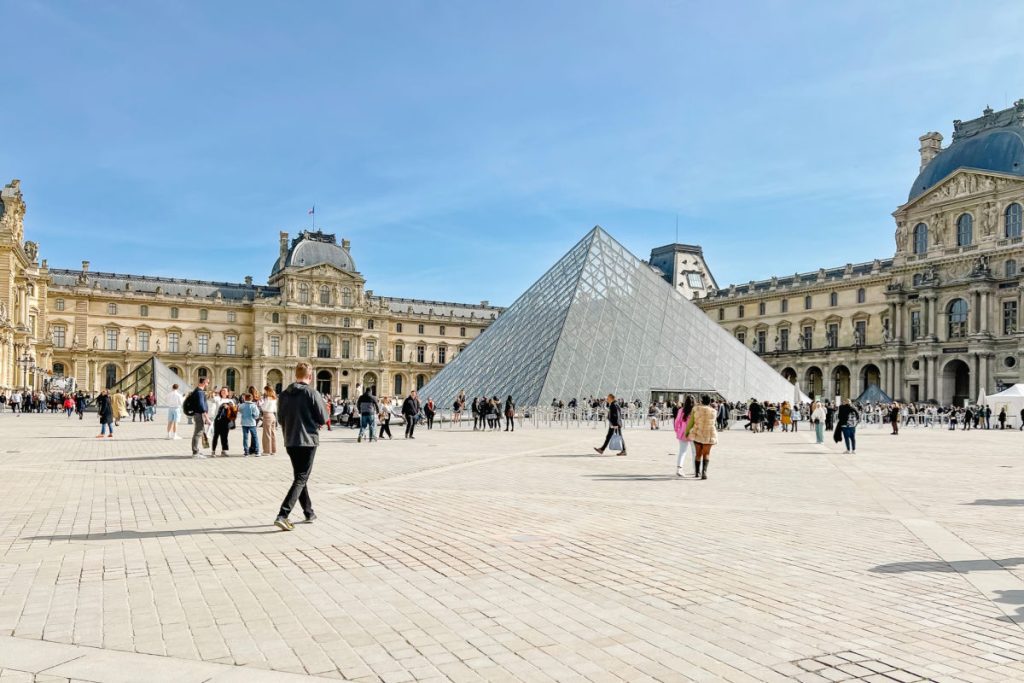
Check museum opening times
The first thing to do is to look at the major tourist attractions you want to see and make a note of the opening time, closing time, and days they are open. In Paris, major museums are closed on certain days and you need to work your itinerary around that. While you are researching this information, make a note of how long you should expect to spend at each attraction to give yourselves enough time and don’t overcrowd your days.
Here are some examples of top attractions in Paris:
- Musee d’Orsay – closed on Mondays, open late on Thursdays
- Musée Rodin – closed on Mondays
- Palace of Versailles – closed on Mondays
- Louvre Museum – closed on Tuesdays, open late on Wednesdays
- Centre Pompidou – closed on Tuesdays
- Musée de l’Orangerie – closed on Tuesdays
Map out your days
One of my top tricks for planning our trips involves Google Maps. I will open a Google Map and search for each attraction that I want to visit. Then I will “star” or save each place so that when I zoom out and look at the map, I start to see a visualization of the different places that I want to go.
This allows me to group together certain attractions that I can do on the same day, and my itinerary starts to take shape. I also like to map out how long it takes to either walk from place to place or take public transportation / Uber.
Understanding the proximity between different attractions and when these attractions are open will help you begin to plan out your days.
Step 5: Book Tickets and Tours
As you are researching what places you want to see, you may also want to think about how you want to see them. Sure it is possible to explore all of Paris on your own, but will you get more out of it by taking a tour?
Some of the Paris tours that are worth spending for include:
- Louvre Tour – the Louvre is the largest museum and impossible to explore it all in one visit. Why not tour it with an art historian that can not only explain what you are looking at but also know how to navigate the massive art museum so that you see the highlights and avoid crowds as much as possible? We booked an evening tour of the Louvre with Take Walks to see Mona Lisa at the quietest time.
- Food Tour – a food tour is a great way to explore a neighborhood in a new city and experience the local cuisine in a way that you wouldn’t find on your own (plus get insider tips on restaurants). We booked a food tour of the Le Marais neighborhood with Devour Tours.
- Eiffel Tower – you can buy tickets on your own for the Eiffel Tower, but if they are either sold out or you want to learn more about the history behind the Tower, you may want to consider a guided tour. We booked a combo evening tour that included a river cruise with a glass of champagne and an Eiffel Tower tour with The Tour Guy. (you’ll receive 5% off when you book through this link)
- Ile de Citê – even though the Notre-Dame Catherdral is still under repair, there is much history to explore and learn on the Ile de Citê. We booked a walking tour with LivTours from the Pont Neuf that included skip-the-line access to Sainte Chapelle.
Paris Museum Pass
If you decide to go it on your own, there is still some planning to do. If you plan on visiting many museums, you will likely benefit from investing in a Paris Museum Pass (note: this is different than the Paris Pass.)
The Paris Museum Pass provides you with entrance to over 50 museums and monuments in the Paris area and allows you to skip the ticket lines. The Paris Museum Pass (PMP) is available in 2, 4, or 6-day options, and is valid for subsequent days after the first activation. You can purchase the PMP online and pay to have it shipped via DHL to your home, or you can wait until you arrive in Paris and pick it up at the airport or at other locations around town.
Louvre Tickets
Even if you have the Paris Museum Pass, you still need a timed-entry ticket to enter the Louvre, unless you are taking a tour. If you have a Paris Museum Pass, you can book an entrance time without having to pay for the ticket IF you have the serial number on your Pass. This means if you want to book before you arrive, you either have to pay to have your Pass shipped to your home OR you have to buy tickets to the Louvre.
If you do not have a Paris Museum Pass, you can purchase individual, timed-entry tickets to the Louvre online on the official website. Some other museums and attractions also require timed-entry tickets, such as the Museé de l’Orangerie and the Palais Garnier Opera House.
Catacombs Tickets
If you plan on visiting the Catacombs, it is also HIGHLY recommended that you purchase skip-the-line tickets in advance. It isn’t uncommon to find two to three-hour waits to enter the Catacombs during high season.
Eiffel Tower Tickets
Tickets to the Eiffel Tower are another thing that you need to do in advance. Tickets typically go on sale 60-90 days before the date of your visit. It isn’t always exact so you need to keep checking to see when ticket sales open up for your dates. Tickets do sell out, especially during prime season, so you need to do this in advance.
Decide ahead of time if you want to purchase tickets to the second platform only, or if you want to go all the way to the top. If tickets aren’t available, you can either buy them through a third-party provider or try to get same-day tickets when you are there. Same-day tickets are available while supplies last until three hours before the visit time for lift tickets, or last minute if you are willing to walk up the stairs and only want to go to the second floor.

Notre Dame
Now that Notre Dame has reopened, you need to make a free reservation up to two days before your visit.
Other Attractions
To save time waiting in long lines, you can also book a timed-entry ticket to go to the top of the Arc de Triomphe. And if you don’t have a Paris Museum Pass, you can purchase skip-the-line tickets for attractions like the Musee d’Orsay, Musée de l’Orangerie, and the Palais Garnier opera house if time is of the essence.
One more ticket you need to book in advance is for L’Atelier des Lumieres. They do not sell tickets at the door and you need a timed-entry ticket to get into this very cool digital art gallery.
Step 6: Arrange Transportation
Paris is known for its strikes, particularly transportation strikes. While you can certainly take the train or bus from the Charles de Gaulle airport into the center of Paris, the best way is to consider booking a car transfer in advance — just in case! Particularly if there is also a taxi strike because then finding an Uber is going to be a nightmare. Strikes are another good reason to stay in a central location so that you can walk if the Metro isn’t running and cabs or Ubers aren’t available. I’ve used Welcome Pickups in Paris and many other cities and I’ve always been happy with the service.
If you are staying out in Montemarte or one of the further Arrondissements, you will be spending a lot of time on the Metro (when choosing a place to stay always check out the closest metro stations!) and you may want to consider purchasing a pass. Different options are available depending on when you arrive and how long you are staying. You can purchase the Navigo Decouverte pass at the airport or train stations, but make sure you bring along a passport-size photo or you’ll need to use one of the photo booths to take one.
If you will be taking a regional train to another city or country, make sure you reserve your tickets and seats in advance. European train routes typically open up for ticketing about 90 days prior to departure. I typically use Rail Europe to book train tickets for Europe as it allows you to see all the different train line options.
Step 7: Make Dining Reservations
Like when visiting any big city, you are going to be happier if you plan your dining, at least as much as possible, in advance. This is especially true if you hope to indulge in a meal at a Michelin-starred restaurant as the best restaurants can be tough to even get a reservation for! Being hangry is a recipe for disaster when it comes to bursting the chill vacation mood.
With a little advance planning that can be avoided. Just keep in mind that in France, lunch typically runs from 12-2 pm. Don’t be surprised to walk in at 1:30 and be turned away. Plan your day accordingly or settle for dining at a cafe.
Dinner hour typically begins around 7-7:30 pm through 10 or 11 pm. But again, this is to give time to enjoy the meal, not to arrive at 10:30. Reservations for dinner are highly recommended if you don’t want to spend extra time walking here and there looking for an available restaurant that meets your tastes. I would recommend booking fine dining restaurants at least a month in advance and you can book your other dining a couple of weeks before you depart.
Luckily many restaurants accept online reservations through their website or through The Fork (the French version of Open Table.) Don’t be surprised if you are required to leave a credit card with a hefty cancellation fee for fine dining establishments.
There are plenty of wonderful food options to choose from in Paris but if you need a little help guiding your selection, I typically turn to one of the following:
Step 8: Final preparations
We have made it to the final one to two weeks before your departure! Hooray, the trip is almost here but there is still so much to be done. Since you are traveling to Paris, I would recommend signing up for the U.S. State Department’s Smart Traveler Enrollment Program (STEP). This lets the State Department know that you will be in France and they can get in touch with you via text or phone if there is an urgent event that impacts U.S. travelers (e.g. a terrorist attack, pandemic, strikes, etc.)
Money matters
Next, it is time to take care of money matters. I usually recommend going to your local bank to request Euro before you depart. Many times it takes 3-5 business days to get delivered. I typically withdraw 300-500 Euros and if I need more, I visit a local ATM. It pays to know in advance if your bank is affiliated with any French banks to avoid extra fees. Be sure to request denominations of 50 Euro and under otherwise you may have trouble getting change.
You should also contact your credit card company to let them know that you will be traveling overseas so they don’t put a block on your card.
Communication concerns
Before you depart, figure out how you are going to communicate from abroad. Many wireless companies now offer affordable international calling or data plans. However, I find it even more affordable to use an eSim if you have an unlocked, eSim compatible phone (I use Textr.)
It is also a good time to download any apps that you might need while you are in Paris, as well as any movies or entertainment you want for your offline travels. A few apps I would recommend include:
- Uber – widely available in Paris
- Google Maps – download a Paris map for offline access
- Google Translate – very helpful when perusing menus or asking for help
- Airline app – for connection/gate information, mobile check-in and boarding passes, and entertainment options
- XE Currency – for currency conversion
- Travel phrase book – I use Fodor’s Travel Phrases, French version
- The Fork – for making and changing dining reservations on the fly
- Next Stop Paris from RATP – build itineraries, offline maps, tickets, and more
- Oui.Sncf – if you are traveling around France by train
- Paris Metro – navigate the Paris Metro
- Voice Map – purchase and download Paris audio walking tours from Join Us in France
- GPS MyCity
Button up the details
Before you leave, print out multiple copies of your itinerary and store them in separate places. I also like to email copies to trusted friends and save a version in the Cloud (Dropbox, Google Drive, etc.) so that I can access it if my paper copy gets lost. Also, make sure to print out and organize any tickets or vouchers that are required for your entrances or tours, or save these to your phone’s mobile wallet.
While you are at it, take a picture of everyone’s Passport and make sure those are stored on your phone and in the secure Cloud. Print out a copy to carry with you so you don’t need to carry originals with you when out and about (leave those in the hotel safe.) Just remember that you will need to show ID with your vaccine pass to enter attractions and restaurants so be sure to keep your IDs on you for that.
Before you start packing, double-check that you have your seat assignments and your seats haven’t been reshuffled since booking. At that time you can make sure everyone’s passport info, Known Traveler Numbers, and frequent flier numbers are all added to your flight record so that check-in is simple and easy.
Make sure everything is prepared at home by arranging pet or house sitting, stopping your mail or deliveries, setting the thermostat to a low and steady temperature, and setting any timers for your lights or smart home devices. You may also want to alert your home security company that you will be away.
Download your Paris Trip Planning Checklist
Ready to get started? Download and print this ready-made checklist timeline for planning your trip to Paris.
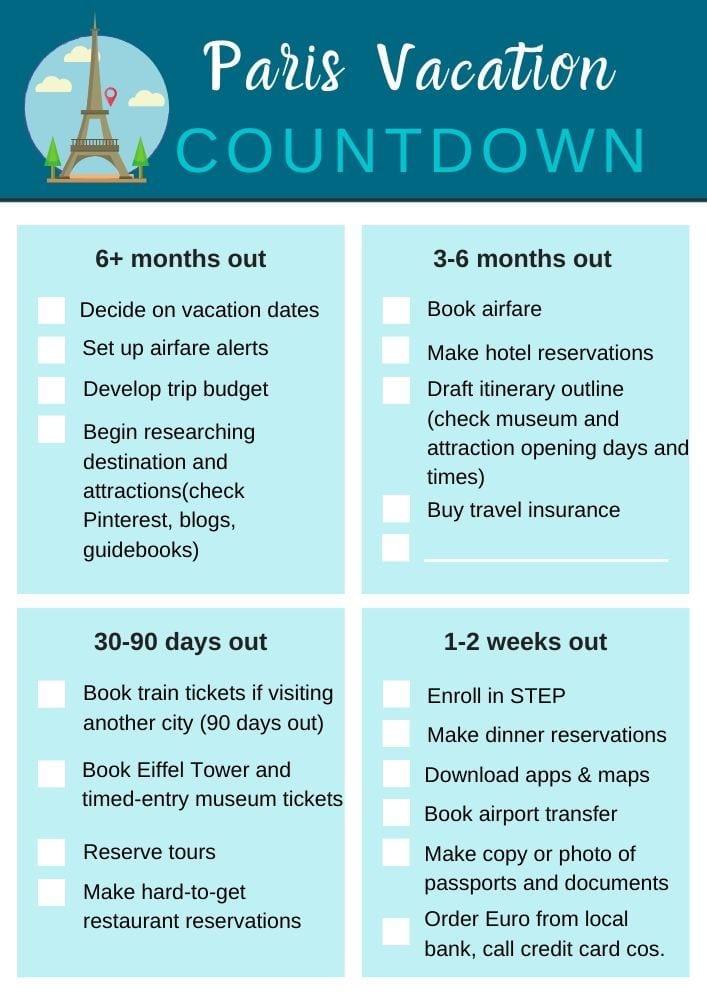
Download your Paris Vacation Countdown Checklist Here
Now all you have left to do is pack, but that is the subject of another post! We wish you an amazing trip to Paris. Au revoir!
PIN THIS FOR LATER
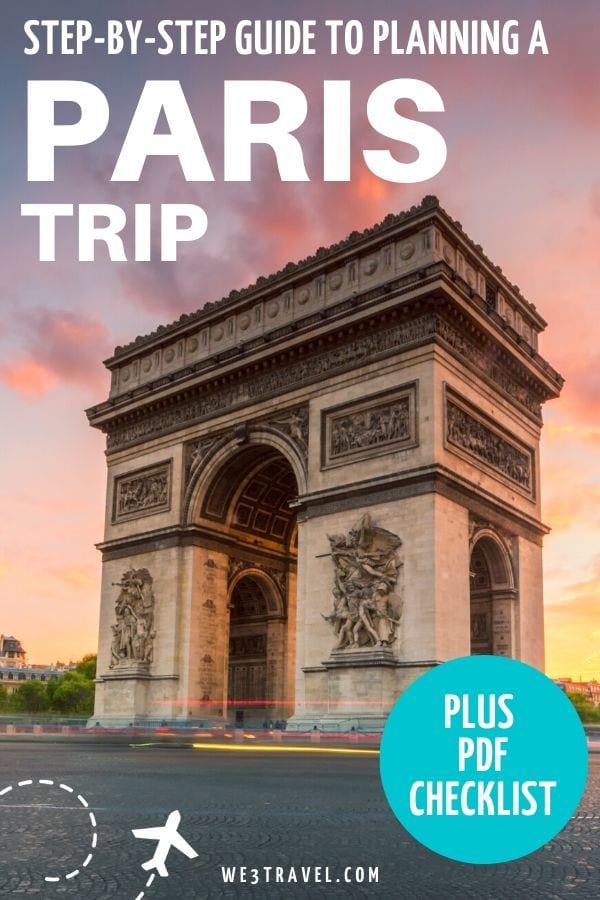

Tamara Gruber is the Founder and Publisher of We3Travel. A former marketing executive and travel advisor, Tamara is an award-winning travel writer and recognized expert in family travel. Tamara is a member of SATW, NATJA, IFWTWA, and the Adventure Travel Trade Association, and serves on the Board of the Family Travel Association. She is also the publisher of YourTimetoFly.com and the co-host of the Vacation Mavens travel podcast.




Next time– I’m doing this itinerary when we head to Paris. Last one was a bit of a dud, the one before was fun, but kids were itty bitty.
Love this step by step guide! So helpful!
Having a successful trip definitively takes planning. The better you plan the better your chances are to get the best deals and experiences you want. Love this step by step guide with what to do, when!
Great step by step planning. I am definitely saving this for future reference as I expect to go to Europe in 2021